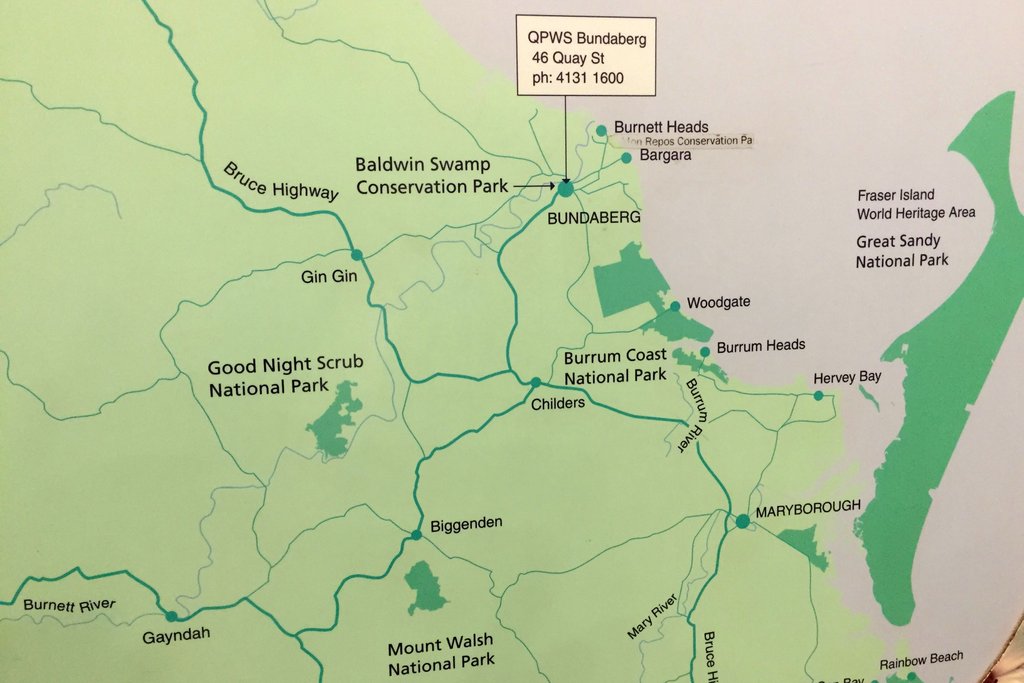Prepare for an unforgettable experience as you witness the magic of nature unfold during the Mon Repos turtle encounter in Bundaberg. During the turtle season, Bundaberg emerges as the epicenter for one of nature’s most awe-inspiring phenomena. It’s a place where the largest concentration of nesting marine turtles and turtle hatchlings on the eastern Australian mainland converges, creating a breathtaking spectacle.
But it doesn’t stop there; Bundaberg also lays claim to hosting the biggest concentration of loggerhead turtles anywhere in the entire South Pacific region. This isn’t merely a destination; it’s a sanctuary for the world’s endangered loggerhead turtle, and its significance in the conservation landscape is monumental.
Where to have a Mon Repos Turtle Encounter
Whether it is Bundaberg turtle hatching or nesting time, or perhaps a lucky combination of both, there is plenty to see at Mon Repos. It is incredible to see these big turtles tracking their way up the beach. They are searching for a safe spot to dig a nest in the sand and lay hundreds of eggs. Around six to eight weeks later, the tiny hatchlings emerge from their sandy home and scurry down the beach towards the sea like the turtle pictured above swimming off Lady Elliot Island (Photo courtesy Tourism and Events Queensland).
A day visit to the Mon Repos Turtle Centre to learn from the rangers in the new interactive facility is a great way for all the family to learn about turtles. To get even closer to these magnificent animals, plan a reef trip to swim with turtles around the islands. Bundaberg operators Lady Musgrave Experience and Lady Elliot Island Eco Resort offer daily departures to the islands for day trips and overnight stays. The pristine coral reefs around the islands are home to plenty of marine life, including turtles and manta rays. Overnight guests on the islands can see turtle nesting and hatching activities supervised by trained island staff, including marine biologists and Master Reef Guides.
Turtle Encounter Photo: Jesse Linderman/TEQ
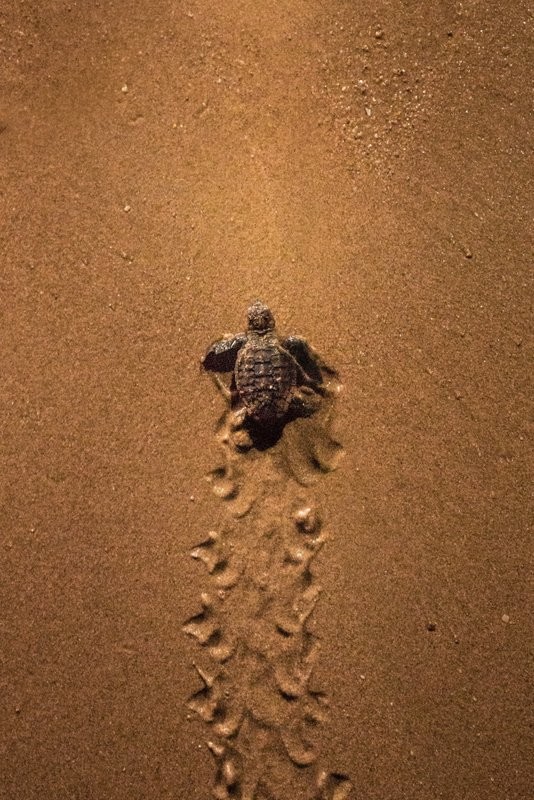
Video credit: Lady Elliot Island-based marine biologist, Jacinta Shackleton
Turtle nesting season in Bundaberg
The turtle nesting season officially runs from November to March and is a frenzy of love action captured on the Southern Great Barrier Reef. Lady Elliot Island-based marine biologist Jacinta Shackleton has caught some of the turtles in action. She saw four mature male turtles and one female in a mating frenzy as the chaps tried to win the attention of the would-be mamma. Filming for around 20 minutes, Jacinta watched as the males circled and waited for their opportunity before moving out to deeper water.
“The males were biting and hitting the successful male – even trying to stack on top of him and to pull him off the female,” she said.
Jacinta explained that females will mate with as many males as they can and will store the sperm before self-fertilising between three and seven clutches of eggs each breeding season. Each clutch produces between 80 and 150 eggs.
“Female turtles feed for about 18 months to build the energy required to create the eggs and the laying process. Here on the southern Great Barrier Reef, we usually start seeing hatchlings around Christmas, and nesting should start any time now.”
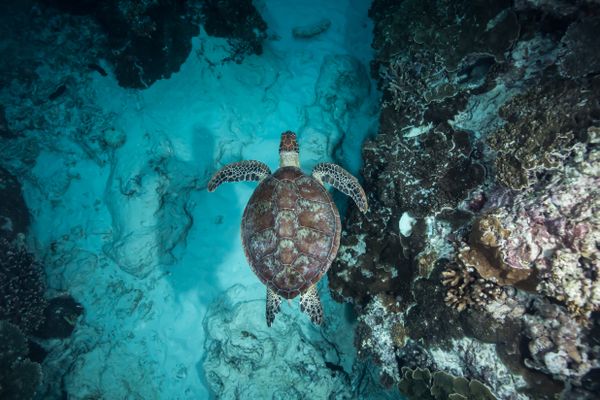
See turtle hatching at Mon Repos
The Mon Repos Turtle Centre is the starting point where you’ll see displays of all of these magnificent animals. Turtles are easily disturbed, especially by light, so Queensland Parks and Wildlife Service rangers lead you out on a guided experience over the summer months on Mon Repos beach to see turtles laying their eggs and turtles hatching in Bundaberg beaches. The guided experience ensures the successful breeding that is crucial for the survival of this endangered species.
The dance of life takes centre stage as these majestic loggerhead turtles return to their ancestral nesting grounds year after year. The success of their nesting and hatching endeavours is not just a cause for celebration; it is a matter of critical importance. These remarkable creatures face numerous challenges in the wild, from habitat loss to climate change. By supporting the continued success of nesting and hatching turtles at Mon Repos, you are actively contributing to the survival of the endangered loggerhead turtle species.
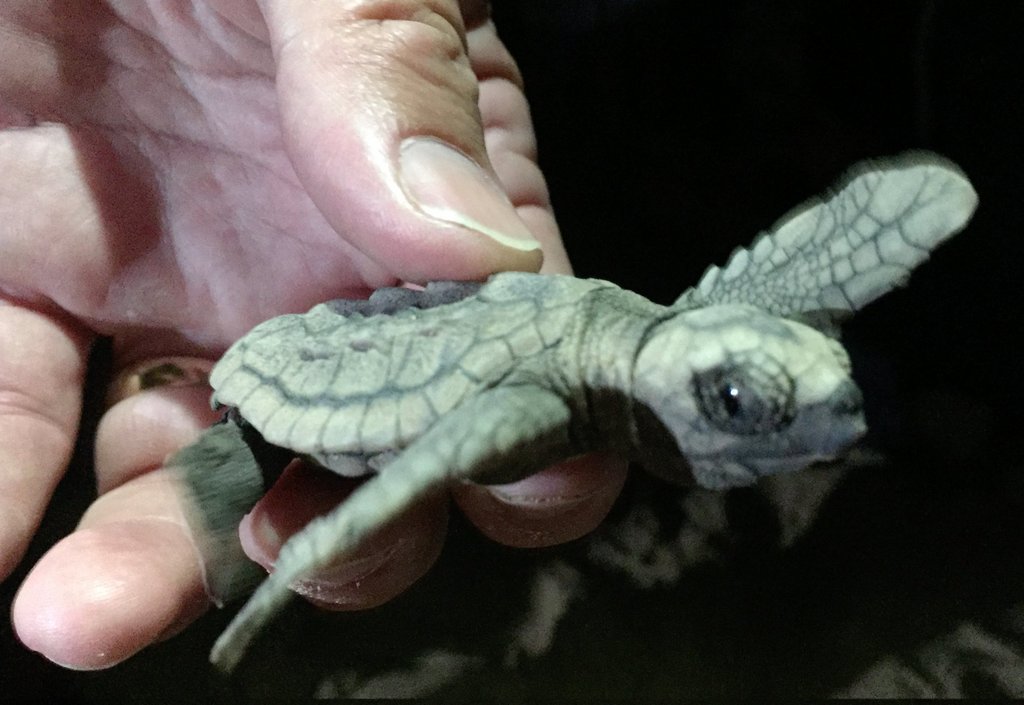
Bundaberg turtle hatching. Photo: Kerry Heaney
Baby turtle hatchlings race to the sea
Time your Mon Repos Turtle Encounter tour arrival for 6.30 pm to stand in the entrance queue. It’s dark outside the centre because that’s the way the turtles like it. Best to let your eyes adjust to the dark because it only gets darker. Remember to bring your mozzie repellent because you’ll catch a few of them too.
After entering the centre and checking out the displays, it is time to take a seat in the amphitheatre for video on turtles and instructions on the ranger’s rules of engagement. No one can predict what the evening show on the beach is going to include. Last night’s laying and hatching events are on the board, but tonight the cast is new. Wild animals do what they want when they want so you can only hope for the best.
There are rangers on the beach checking for action and ready to report back when there is something to see.
Time for some Mon Repos turtle beach action
We are lucky, and group two get called up quickly. It’s hard to see in the dark, but I think there might be 60 people in the group. We walk along the beach with the ranger at the front checking that we are not going to run into any unexpected turtles or hatchlings. The wooden boardwalk that leads down to the beach is lit at intervals with flashing blue and green lights. There’s a handrail so grab onto that, and you’ll be right. Once you hit the sand, you’ll be glad that you’ve got beach shoes on as there are quite a few rocky sand patches to traverse.
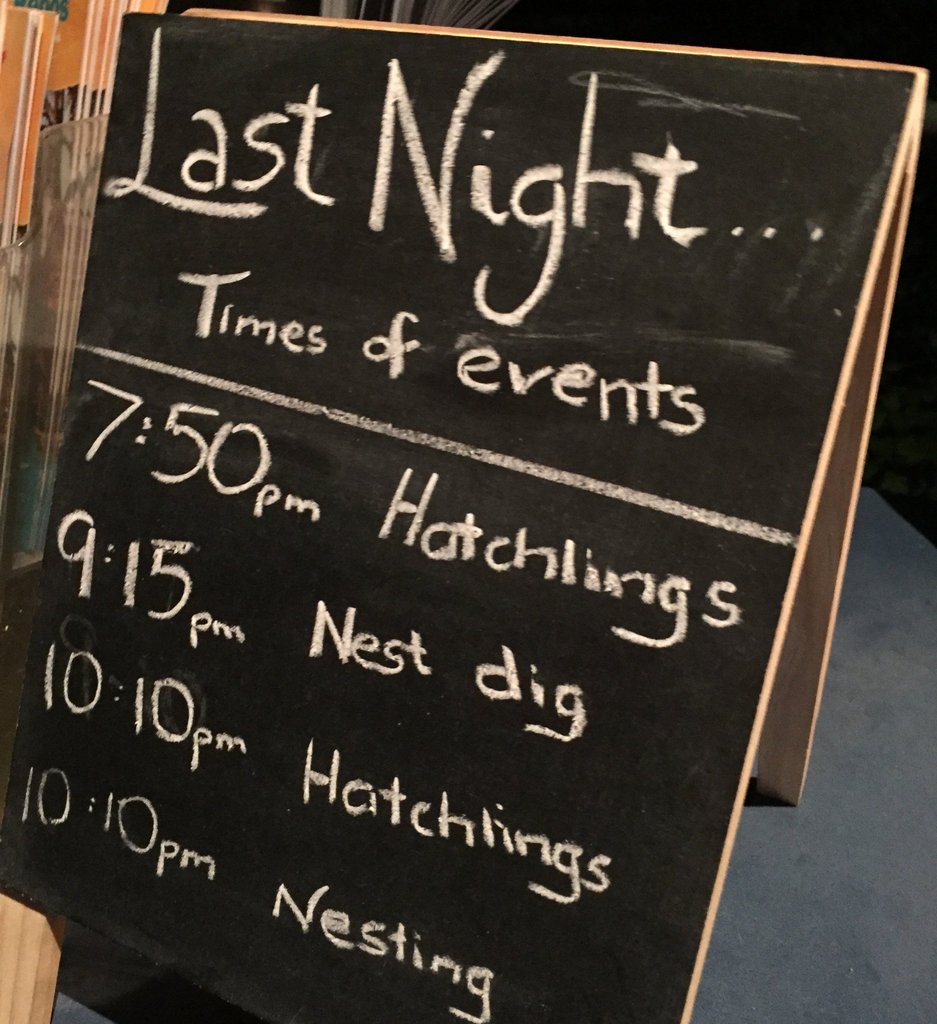
The daily timetable during turtle season in Bundaberg. Photo: Kerry Heaney
Mon Repos turtle hatchlings emerge from the nest
When we reach the nest, there’s a circle drawn in the sand, and we sit and stand around it, so there’s plenty of room for the hatchlings. The tiny loggerhead turtles actually emerged from their eggshells four days ago and had been working their way up the pear-shaped nest hole their mother dug in the sand.
Tonight’s the night for this group, and they pop out of the sand like a swarm of giant ants heading towards the light, any light. The group is under strict instruction not to use any light as this will confuse the turtles. Once every hatchling is out of the sand, a couple of lucky babies are introduced to the group. We are allowed to touch fins and shells but not their heads. The fins are surprisingly strong as they push through the air.
To make sure the little ones find their way into the ocean some people stand in a line painting a path with a torchlight to the ocean. Like moths to a flame, the flippers push towards their water release. Once they reach their new home, the hatchlings disperse and don’t have anything to do with other turtles until they reach sexual maturity at 35 years. It’s a long time between drinks!
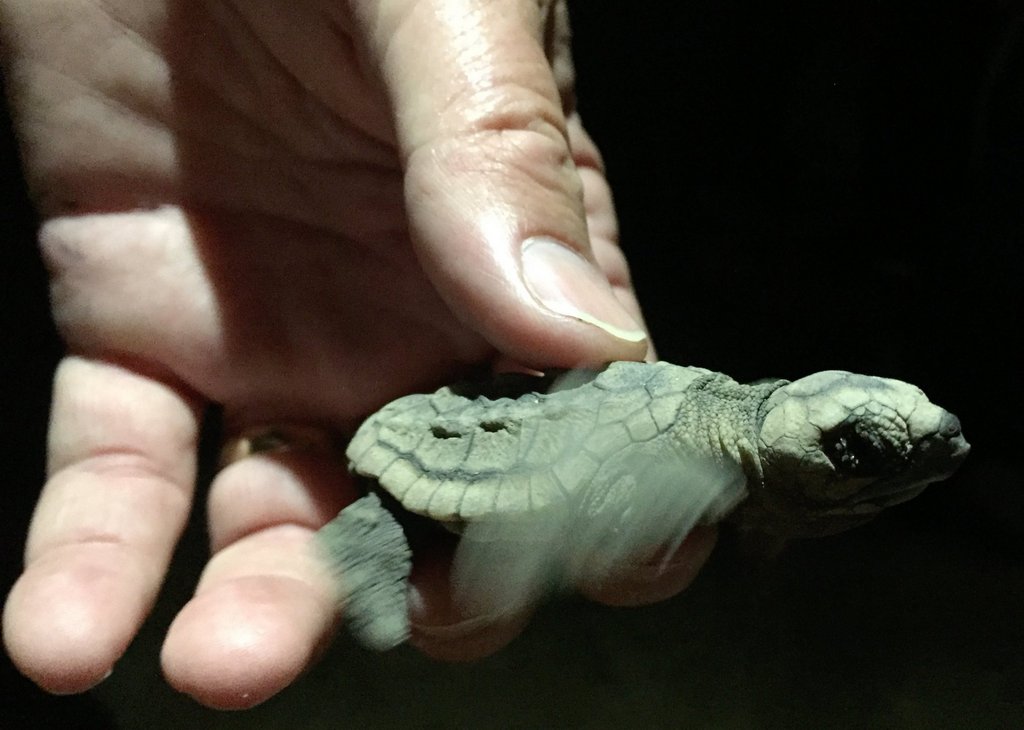
A tiny turtle hatching starts its journey to the sea during Bundaberg turtle season. Photo: Kerry Heaney
Where else can you see Bundaberg turtles ?
Lady Elliot Island
Lady Elliot Island is a coral cay located at the southern tip of Australia’s iconic Great Barrier Reef, famous for its unspoilt coral reef and fantastic marine life. The Great Barrier Reef Day Trip to Lady Elliot Island from Bundaberg (20-minute flight) or Brisbane allows guests to explore the reef from the air, a glass-bottom boat and the water, all in one day. Or you can stay longer!
Lady Musgrave experience
Lady Musgrave Experiences offers the shortest boat day trips to the reef departing from Bundaberg. The catamaran takes up to 150 passengers to the coral lagoon around Lady Musgrave Island. Whale watching, snorkelling, scuba diving, catering with ingredients sourced from local producers, encounters with turtles, Manta Rays and over 1,200 fish species all make the Lady Musgrave Experience a bucket list adventure.
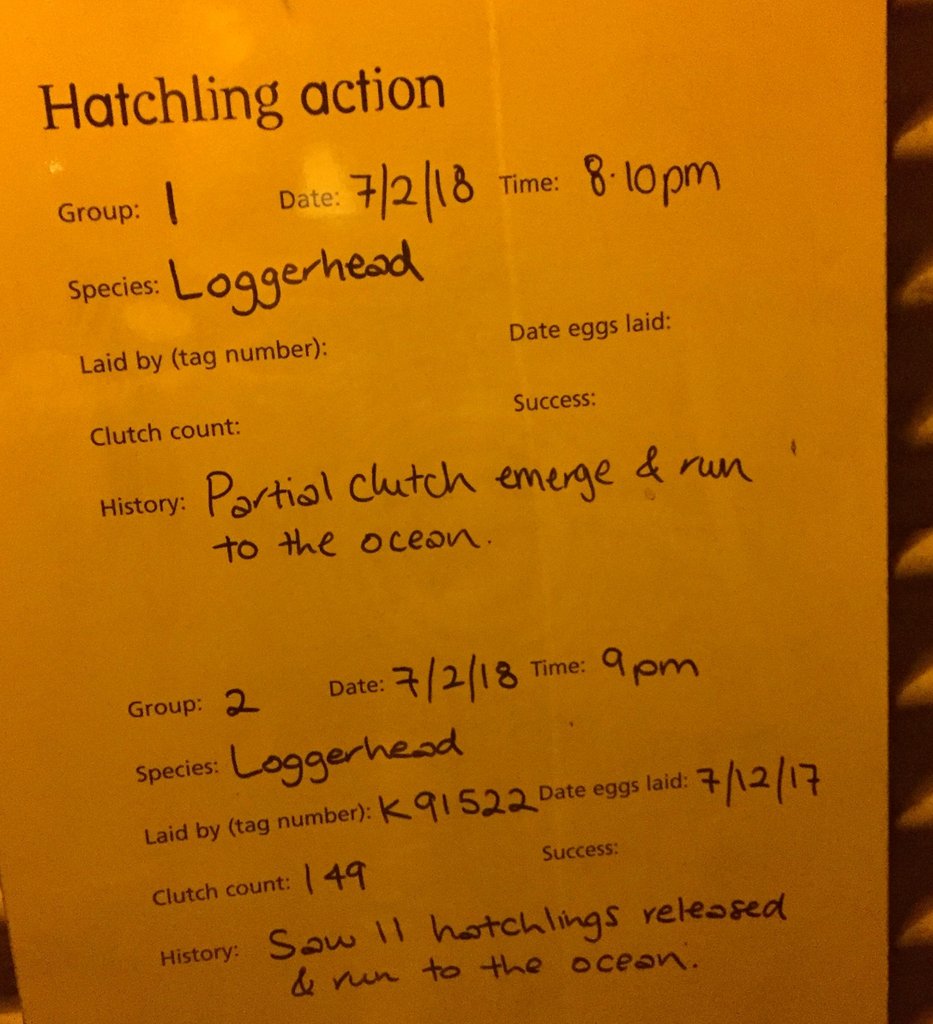
Ranger’s daily turtle season in Bundaberg report. Photo: Kerry Heaney
When can you have a Mon Repos Turtle Encounter ?
The Mon Repos turtle encounter season in Bundaberg runs from November to March. You can join QPWS Rangers at Mon Repos Turtle Centre on a guided tour to watch nesting (November to January) and turtle hatching (January to March). Mon Repos Turtle Centre is about four and a half hour’s drive north of Brisbane, 15 minutes east of Bundaberg and 10 minutes from Bargara.
Entry costs to this fantastic experience are surprisingly low – just $9.80 for children 5-14 years, $14.10 for adults (15 years or older) or $35.80 for a family.
More on the Bundaberg area
